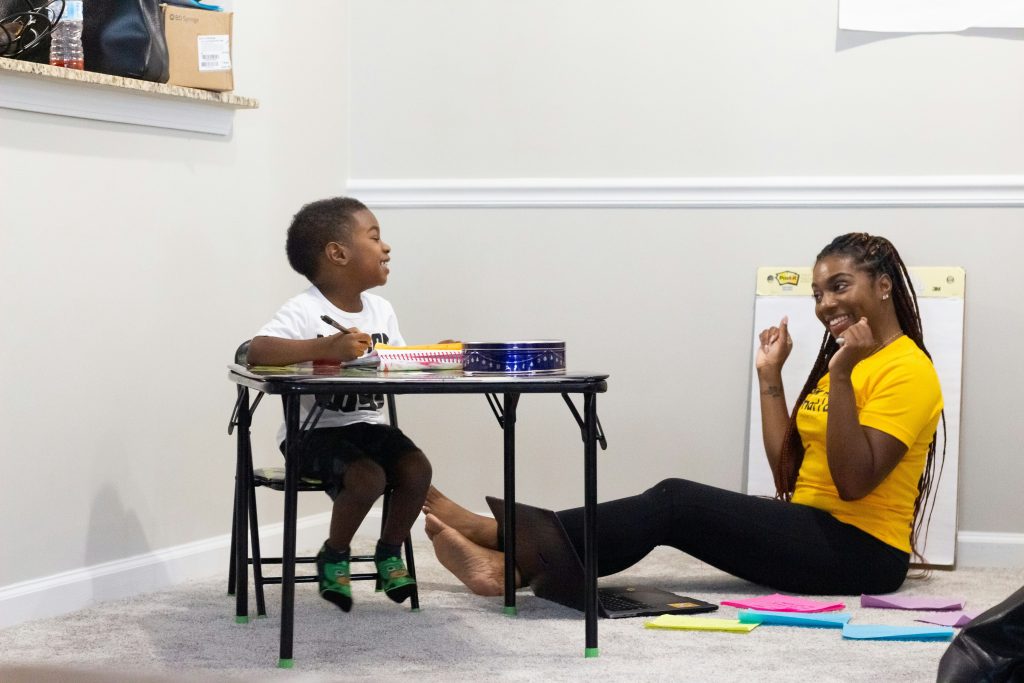For children on the autism spectrum, the learning environment plays a powerful role in how well they can focus, participate, and feel comfortable at school. A classroom might look perfectly ordinary to most students, but to a child with sensory sensitivities, that same space can feel overwhelming, chaotic, or even painful.
That’s why creating sensory-friendly learning environments isn’t just helpful; it’s essential. These are spaces designed with intention, where lights, sounds, smells, and textures are carefully considered so students can feel safe and supported as they learn.
If you’re a parent exploring schools for your child, here are some of the key features and accommodations to look for in a truly sensory-considerate classroom.
- A Calm, Thoughtful Visual Design
Bright, colorful classrooms may look fun and stimulating at first glance, but for many children with autism, they can trigger sensory overload. Classrooms packed with posters, charts, and decorations can be visually overwhelming and distracting.
Optimal learning spaces have:
- Muted, neutral tones on walls and furniture
- Limited wall decorations or visual clutter
- Clearly defined areas, such as quiet zones, reading corners, or individual workspaces
Instead of a visually busy environment, a sensory-friendly classroom uses subtle organization and minimal visuals to help students stay calm and focused. Calendars, schedules, and learning visuals should be simple, consistent, and placed where they provide clarity, not confusion.
- Comfortable Lighting Choices
Fluorescent lights are a common source of distress for children with sensory sensitivities. They can flicker, hum, or emit harsh glare that goes unnoticed by most people but can be intensely distracting, or even painful, for some autistic students.
Sensory-conscious classrooms often use:
- Natural lighting whenever possible
- LED lights with soft tones
- Lamps instead of overhead fluorescents
- Dimmable lights or shaded panels to control brightness
If lighting adjustments aren’t possible, students may be given access to sunglasses, visors, or seating positioned away from direct overhead light. What matters most is that the lighting can be adapted to support comfort and concentration.
- Access to Sensory Break Areas
In any school day, there are moments that can feel overwhelming: too much noise, too much stimulation, too many demands. For a child with autism, those moments can build quickly, sometimes without warning. That’s why it’s so important that every classroom offers a quiet, predictable space where students can pause, regroup, and feel safe.
These calming spaces aren’t about discipline or isolation. They’re integrated into the classroom culture as supportive tools for emotional regulation. Maybe it’s a cozy reading corner tucked away from the main activity, or a soft bean bag next to a low shelf of sensory tools like fidgets or weighted objects. Some children may benefit from being in a quiet tent-like space with dim lighting, while others just need a calm seat near a window where they can breathe and settle.
What matters most is that the space is available without stigma. Children learn that stepping away when they need to isn’t a sign of failure; it’s a skill. Over time, they begin to recognize their limits and use the space to reset before returning to learning.
- Tools That Support Self-Regulation
A truly sensory-friendly classroom doesn’t wait for a child to struggle before offering support. Instead, it’s designed from the start with the understanding that students have a wide range of sensory and regulatory needs—and those needs deserve to be met with respect and intention.
Throughout the day, children may need help staying focused, easing into transitions, or calming their bodies. Thoughtful classrooms are prepared with tools that help students manage these needs as they arise. You might notice:
- Visual schedules and timers placed where students can easily see them, helping reduce anxiety around transitions or new activities
- Fidget items or sensory objects discreetly available at desks or learning stations, offering quiet ways to maintain focus
- Flexible seating options like wobble stools, standing desks, rocking chairs, or floor cushions, giving students control over how and where they learn
- Clear, consistent routines that create safety through predictability, while still allowing room for gentle flexibility when needed
Not every child will use every tool, and that’s the beauty of a well-equipped space: it honors individual differences.
A sensory-friendly environment doesn’t “cure” sensory challenges, but it does create the conditions where a child can feel secure, focused, and ready to learn. Instead of using their energy to block out discomfort or manage overwhelm, students can begin to explore, engage, and connect.
If you’re searching for the right educational fit for your child, start by observing the environment. Is it calm? Are children gently supported when they need a break? Are routines clear and materials adapted for different sensory needs? These may seem like small details, but for a child with autism, they can mean the difference between shutting down and truly showing up.
At Gersh Autism Academy, we believe that every child deserves a classroom where they feel safe, seen, and supported—sensory needs included. Visit LINK to learn more or schedule a tour.
Resources:

